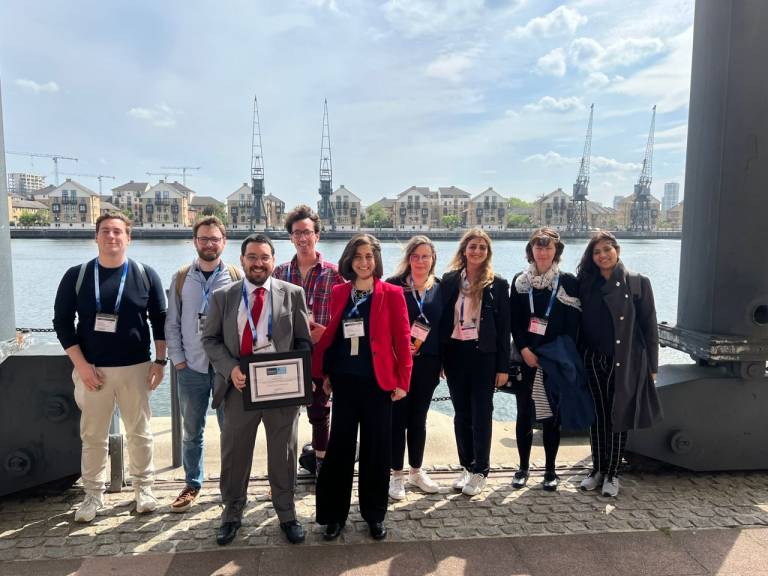 At Annual Meeting of the ISMRM in London, May 2022
At Annual Meeting of the ISMRM in London, May 2022

About Us
The Magnetic Resonance Imaging (MRI) Group develops MRI techniques to increase image contrast and resolution by exploiting new contrast mechanisms. The research has applications in terms of improving disease diagnosis and ensuring therapies are effective.
While conventional MRI uses only the signal magnitude, utilising the frequency (or phase) of the MRI signal has dramatically improved visualisation of tissue structure and can also reveal tissue composition.
Researchers in the group have developed new methods of calculating tissue magnetic susceptibility maps from MRI frequency images, and are now aiming to unlock the potential of these methods to generate clinical biomarkers of disease.
Funded Research Projects
Developing Integrated Susceptibility and Conductivity MRI for Next Generation Structural and Functional Neuroimaging, ERC
Developing MRI Magnetic Susceptibility-Based Cancer Oxygenation Mapping (SBCOM) and Investigating its Clinical Potential to Measure Hypoxia in Prostrate Cancer (PCa), CRUK
Software
Software for MRI phase unwrapping using SEGUE is freely downloadable at: https://xip.uclb.com/i/software/SEGUE.html
Software for QSM reconstruction methods is freely downloadable at: https://xip.uclb.com/i/software/mri_qsm_tkd.html
Public Engagement
- Dr Anita Karsa’s award-winning MRI videos: https://www.youtube.com/channel/UCxEojVZfJghwb-IltliC-Lw
- Article on Prof Shmueli’s ERC grant in EU Research Magazine: https://issuu.com/euresearcher/docs/disco_mri_sfn_eur23_h_res
- Prof Karin Shmueli’s podcast on her MRI research: https://soundcloud.com/user-857709813/7-mri-and-its-next-phase-in-research
The MRI Research Group over the years

March 2022

December 2021

October 2020

February 2020

October 2019
 Close
Close

